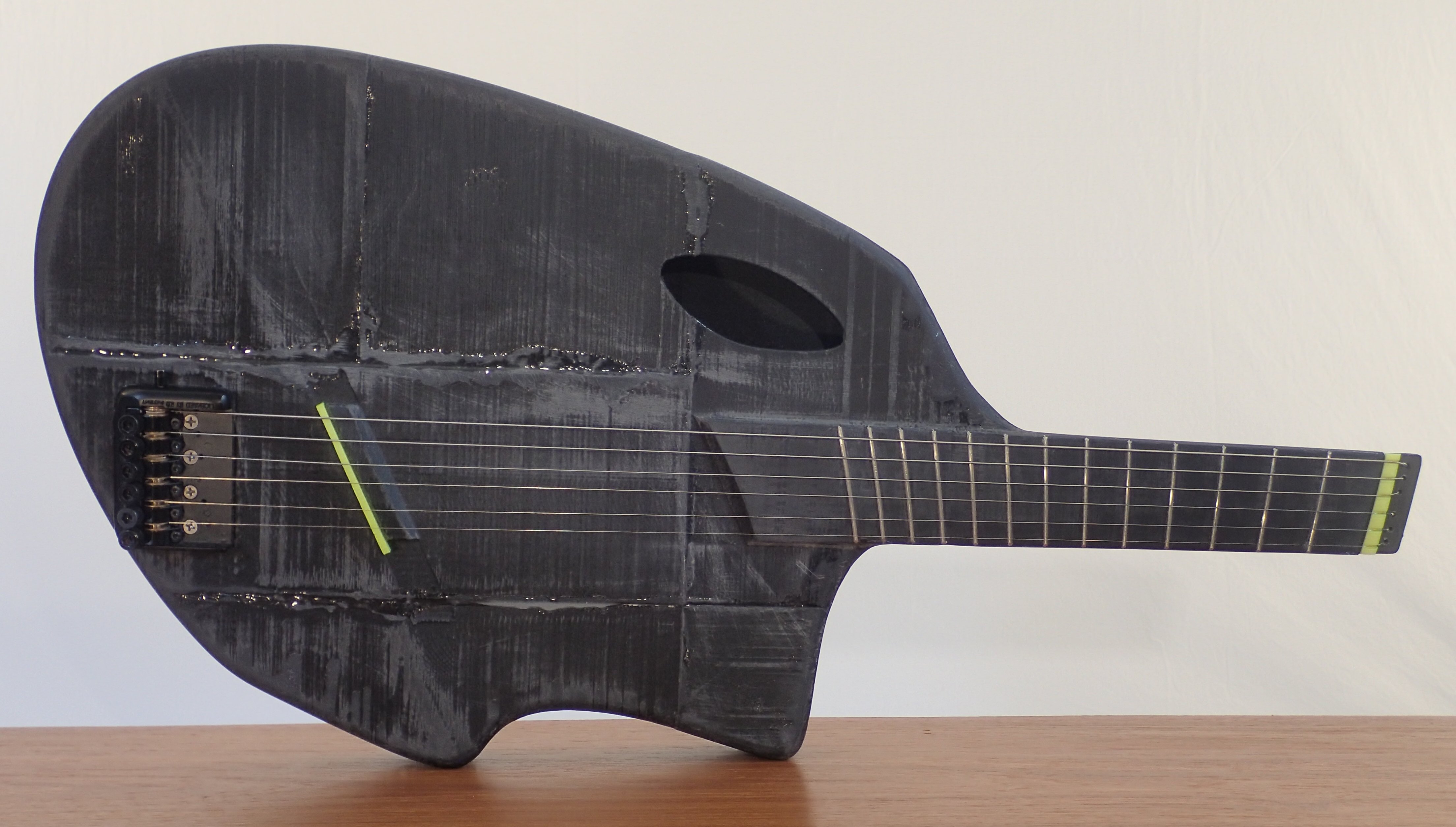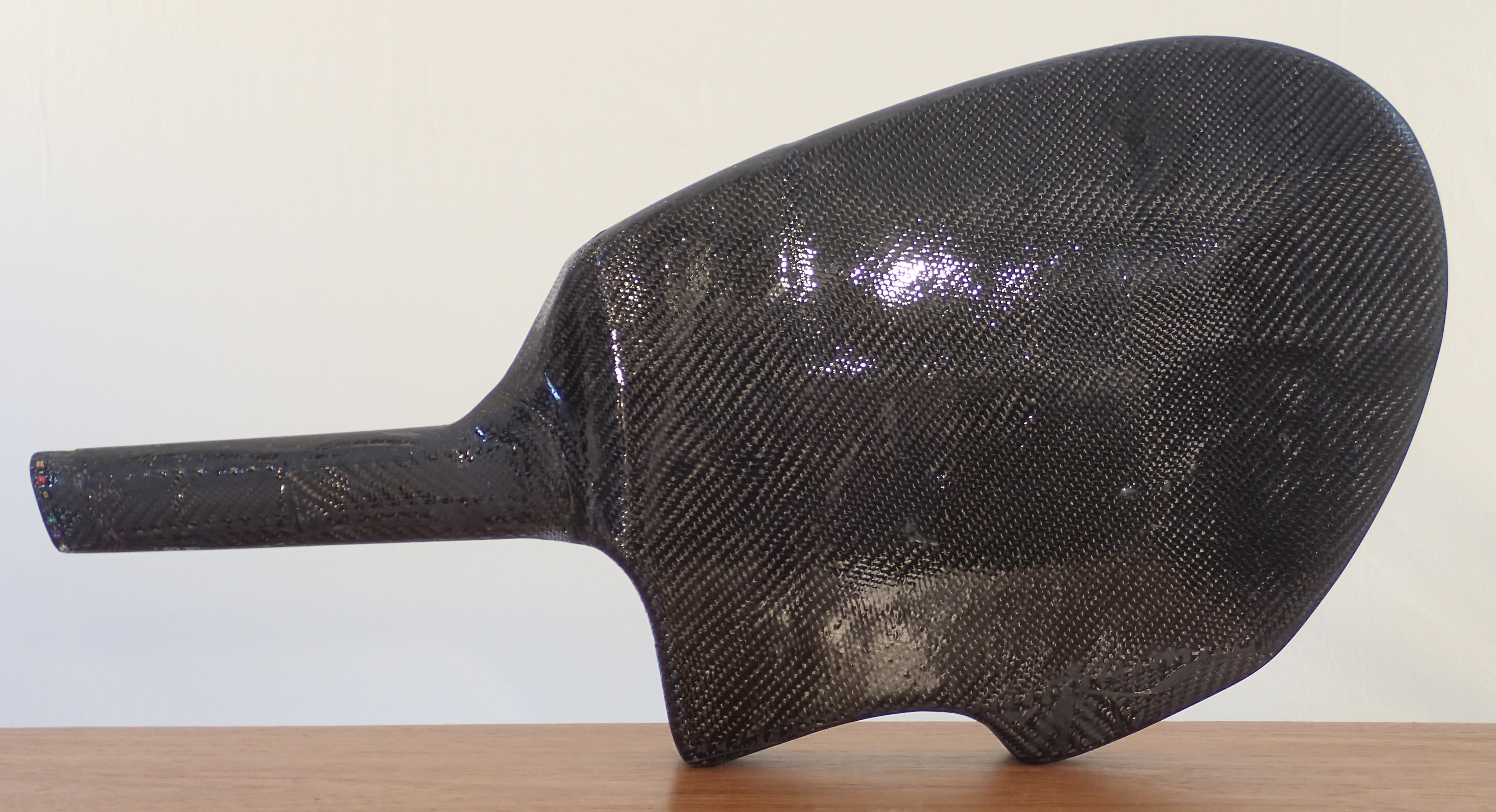Details
After thinking about making a small guitar for a few months back in 2020, I had come up with a few requirements for the design:
- Headless, or placing the tuners at the bridge end or the strings. This greatly shortens the length of the guitar, and improves the balance (with most small body guitars, the heavy tuning machines on the headstock make the guitar unbalanced and uncomfortable to hold)
- Archtop, or placing the tuners below the plane of the fretboard so that the strings exert pressure against the bridge, and properly transmit the energy of the strings to the soundboard.
- Offset soundhole, to avoid any weakening of the soundboard (needed since I am barely using any bracing other than on the belly)
- Small body, while still comfortable to hold. Specifically a notch so that it rests on the leg easily, and a top corner that extends far enough to rest your arm on.
- Fanned frets, because why not!
Once I had a good idea of what I wanted, I made a rough sketch, and some cardboard cutouts to test for ergonomics:
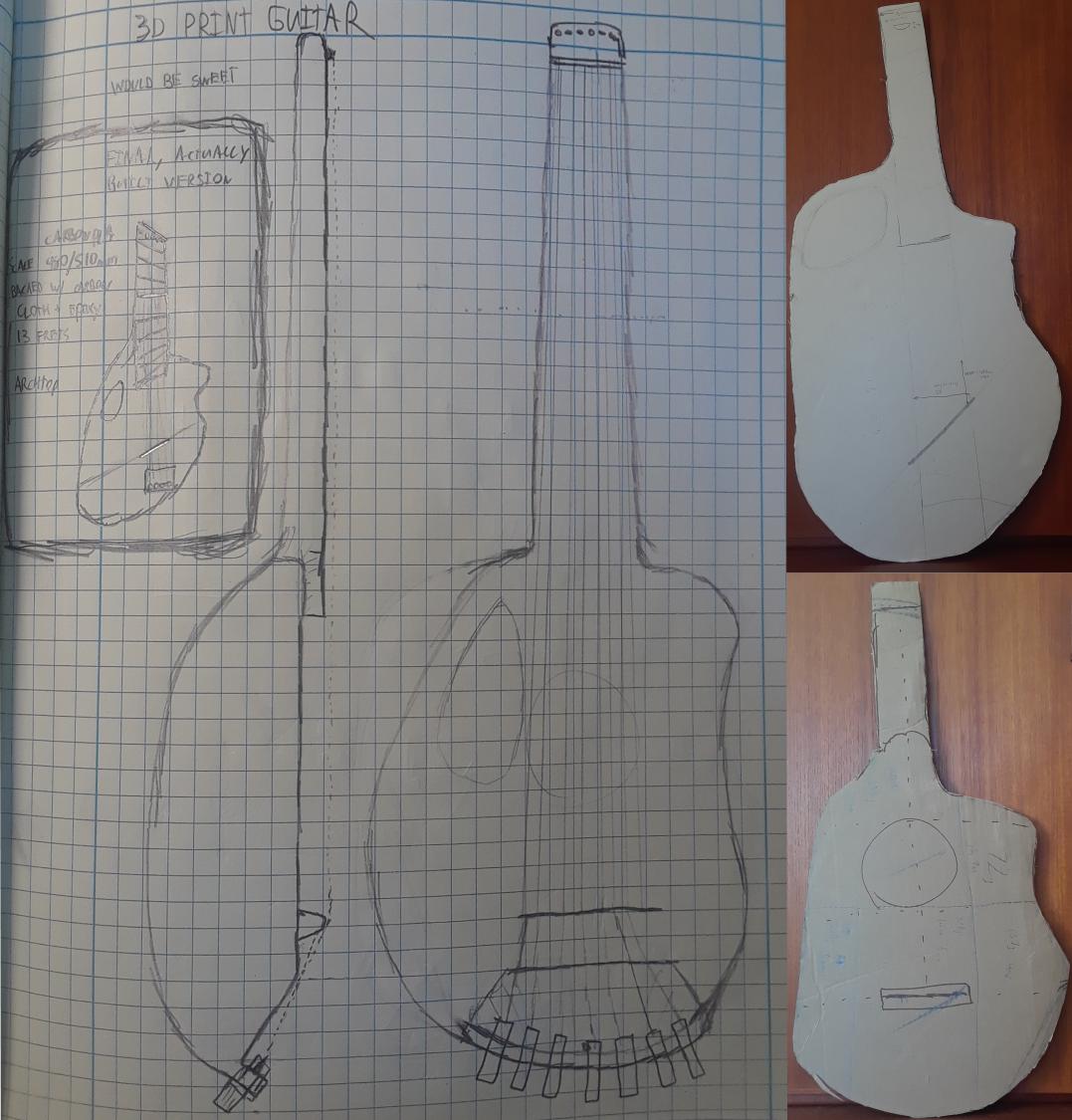
Next, it was time to start modeling. The first thing I did was create the fretboard and bridge, as they were the only things that needed exact measurements. Fret placement in particular is important, and complicated. I did some research, and ended up using the formula from here: Liutaio Mottola
- distance_from_nut = s - (s / (2 ^ (n / 12)))
- s = scale length
- n = fret number
With fanned frets, you have two scale lengths (480mm and 510mm in my case) that determine the placement of the ends of each fret. There are 12 frets per octave, and I wanted at least an octave per string, so I went with a lucky 13 frets total. Not as many as you would find on a normal guitar (20+), but let's be honest, I almost never use frets higher than 12 and each fret only increases your range by a half step. The fretboard extends a bit beyond the last fret to add some strength to the soundboard. After the fretboard, I just did a freehand spline for the outline of the body, only making sure the arm rest and leg rest bits were in the right places. There are two braces running along the belly on either side of the neck to keep the body from folding under the string tension. In the side cutaway below, you can see I cut holes in the braces so that they did not section off the body into multiple resonating chambers (although that might be a fun idea to test later)
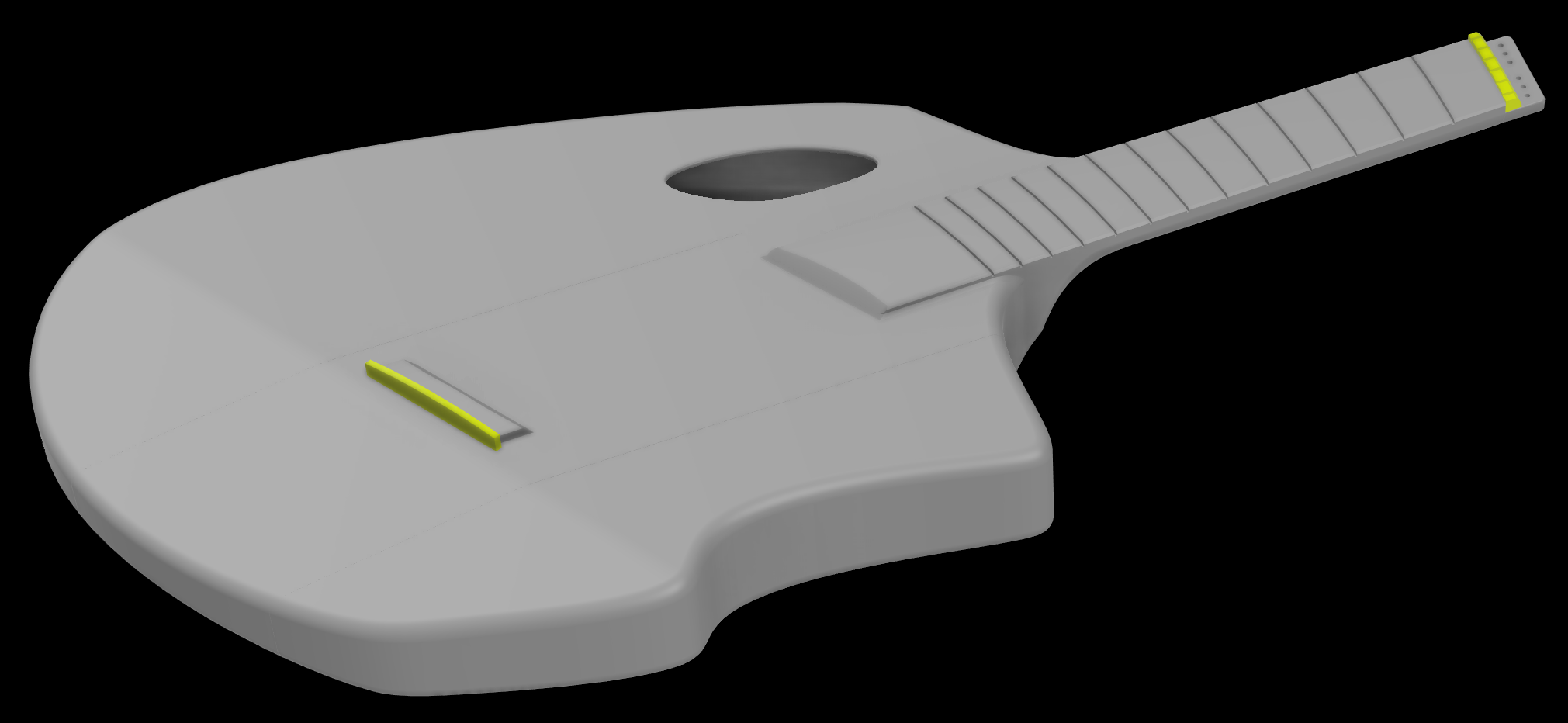
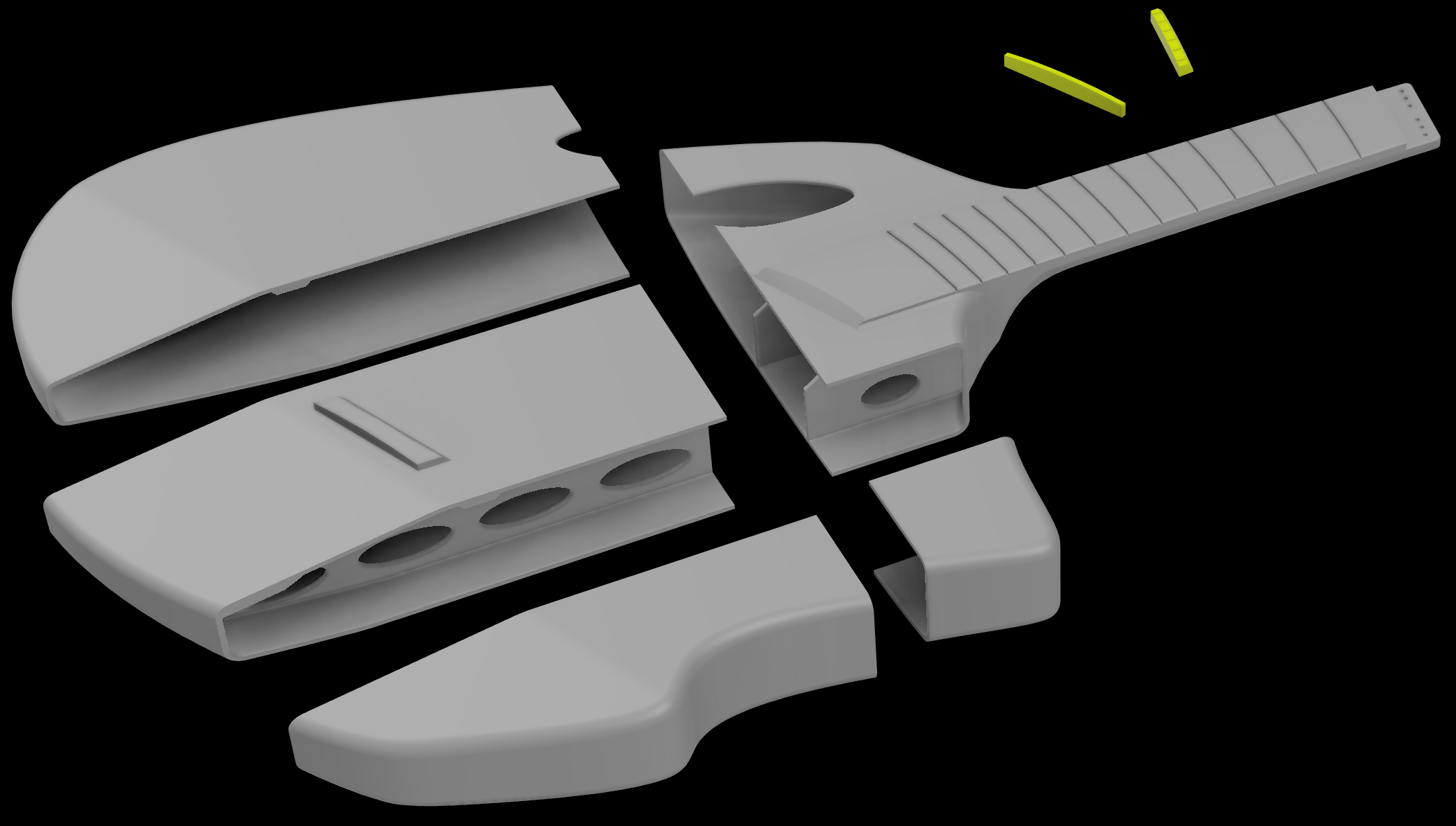

I am still working on this page, come back later.
